Text by Lidia Ratoi
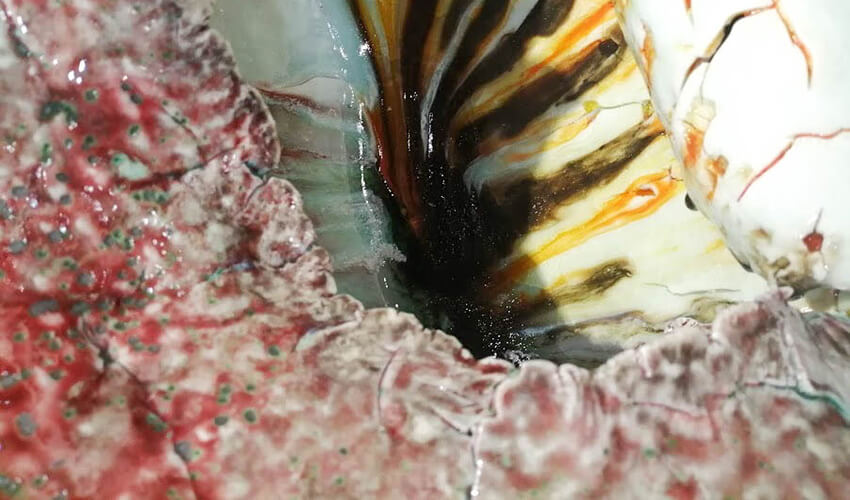
Almost one month after Art Basel Hong Kong 2019, I wondered: what impressed me the most? What do I remember most strongly? Obviously, there were many great works of art. An incredible number of pieces were presented, and through the exhibit, I oscillated through many states of mind, from the initial state of owing, to the enjoyment of the art, to the frustration that art is still, vastly, a conservative field done through conventional methods. I remember the general question I was asking myself: is it right that we expect all of our artists to be now almost coders, or should some artists still be “normal” artists, using a paintbrush, a hammer or an instrument?
Generally, I am aligned with the current 21st human condition of not feeling very much. But however, I did prove myself the most sensitive to one element, throughout the entire collection: the textures. In times when, due to social media, every single corner of every single element must be photo-friendly, artists have understood this and have become, truly, masters of textures.
However, there are various approaches to this idea of texture. For example, Olafur Eliasson and Anish Kapoor have played with texture in terms of reflection. Tomas Saraceno has mixed the texture of light and shadow with metal elements, and in some works, even with colour. Hajime Sorayama has chosen to highlight the beauty of the female body by using the texture we traditionally find most precious – shiny, bright gold. Nikki S. Lee has distorted the traditional portrait by juxtaposing two images, creating almost a texture of human-like features. Sarah von Sonsbeek and Anselm Reyle both manipulated metallic folds.
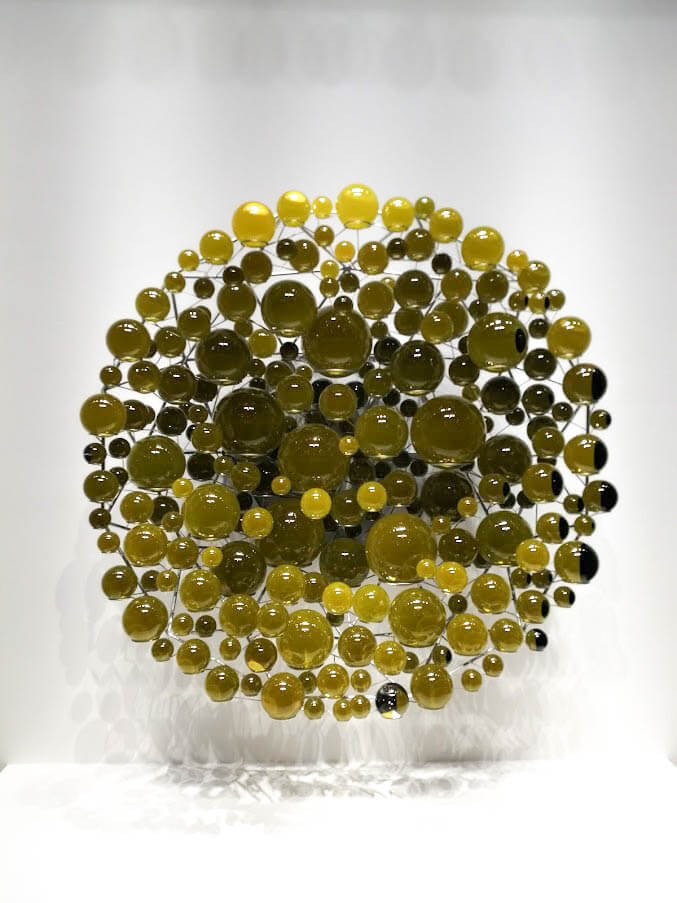
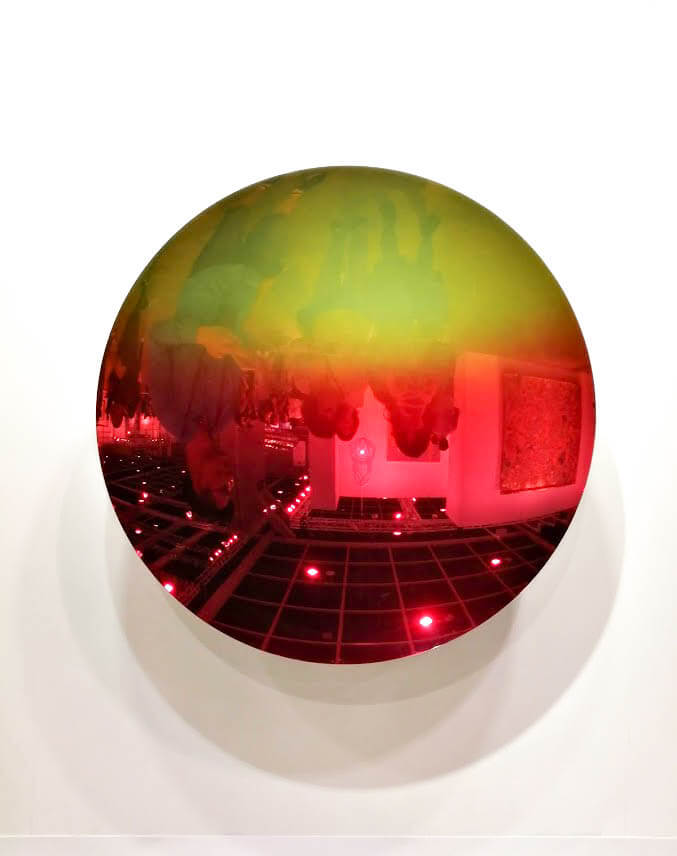
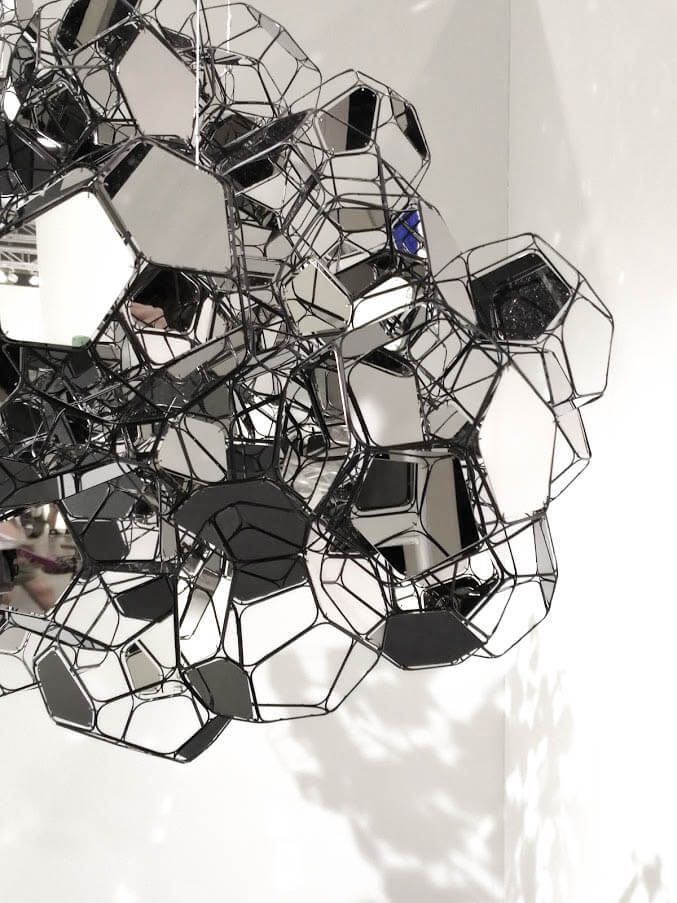
Centre: Anish Kapor
Right: Tomas Saraceno
But impressed me most were the two extremes with which I started and ended my Art Basel Hong Kong Tour – Lee Bul’s powerful Willing To Be Vulnerable, and Aki Inomata’s Why Not Hand Over A “Shelter” To Hermit Crabs? One piece calls for reflection, whereas the other calls for action.
Lee Bul’s piece is a huge Zeppelin, covered in aluminium, and placed on top of aluminium tiles, which creates an interesting play between the reflections of the two surfaces. Visitors were not allowed to step on the aluminium tiles, which only furthered their curiosity to see the “underbelly” of the device. The piece advocates for reflection towards a zeppelin accident that caused 96 passengers to die. While a tragic event triggered this piece of art, it has a certain strength – the silhouette and the materials are bold and distinctive, and the installation generates a synesthetic feeling of force, rather than sadness.
On the contrary, Aki Inomata’s pieces are small and delicate, using the subtle appearance of 3d printed transparent resin to create artificial shells for crabs. The “shells” exist because most crabs are kicked out of their shelters by stronger hermit crabs and therefore forced to exchange shells. The printed pieces have the shape of various cities worldwide, helping to enhance the idea of “living”. Due to the creature they are supposed to aid, the pieces are almost in a micro-scale, but somehow, Aki Inomata’s booth was equally as powerful as Lee Bul’s installation.
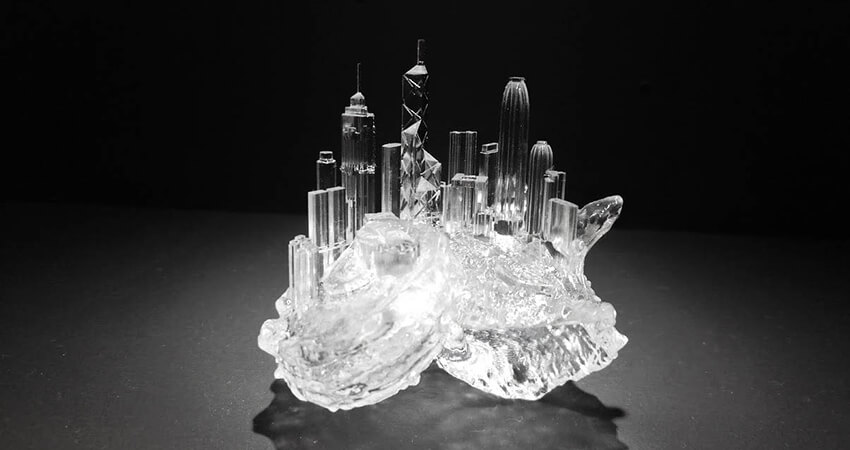
Granted, I shall admit that discussing texture within such a large exhibition may seem either strange or banal. However, it is important, especially for those in the artistic field, to pose questions such as: what do the people who view or work remain with? Do they remember the stories? The colours? The technique? Do they remember the feeling they experienced when viewing it? Or the only thing that truly interests anyone anymore is that of taking a great Instagram shot?
The Textures of Art Basel Hong Kong have been outmost inspiring and have led me to believe that, whatever technique, be it manual, using a robot or using only the digital environment, has to have its own aesthetic qualities and memories. The artists of today are no lesser talented than their predecessors, and by walking booth by booth, I was amazed by the possibility of divagation of the human mind, capable of interpreting reality with such a wide palette.






